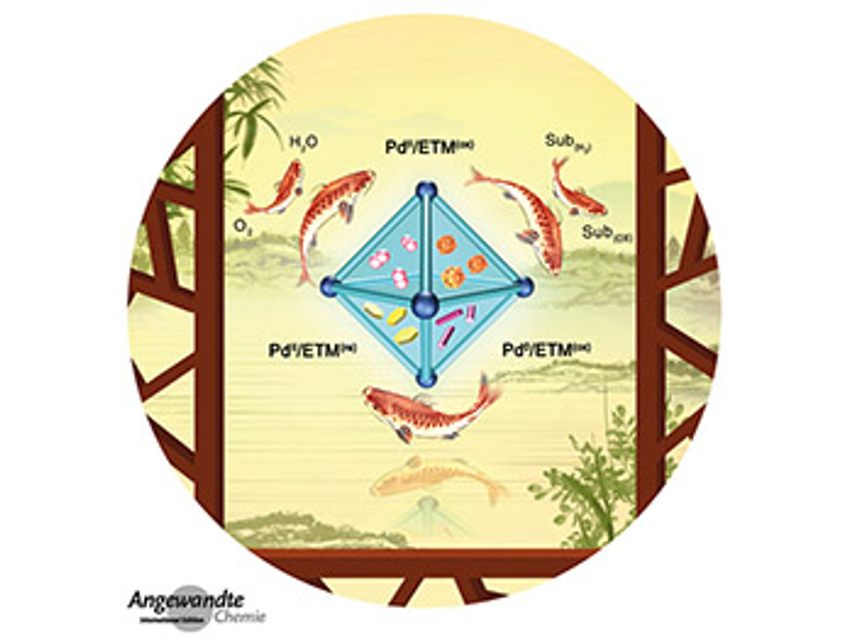In this issue, A. Breder and C. Depken review light-driven single-electron transfer processes in sulfur and selenium multicatalysis. How do they enable transformations that would be impossible for the isolated catalysts? The Minireview deals with the Buchwald–Hartwig amination (A. M. Haydl et al.) and the Highlight is about artificial-intelligence-driven organic synthesis (C. Empel, R. M. Koenigs). E. Baráth and E. Mejía report from the 54th Bürgenstock Conference on Stereochemistry earlier this year.
In the original research section, H. Jiang et al. describe palladium catalysis for aerobic oxidation systems using a robust metal–organic framework (see picture). C. M. Niemeyer et al. succeeded in the bottom-up assembly of DNA–silica nanocomposites into micrometer-sized hollow spheres. D. F. Perepichka et al. found a strong enhancement of π-electron donor/acceptor ability by complementary DD/AA hydrogen bonding, and G. Frenking et al. present trisbenzene complexes of alkaline-earth elements.
- Angewandte Chemie 48/2019: Synergy,
Angew. Chem. Int. Ed. 2019, 58 (48).




